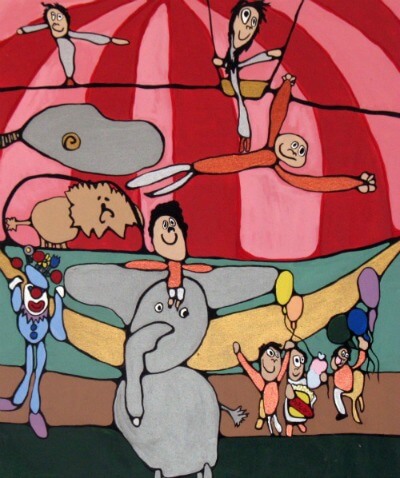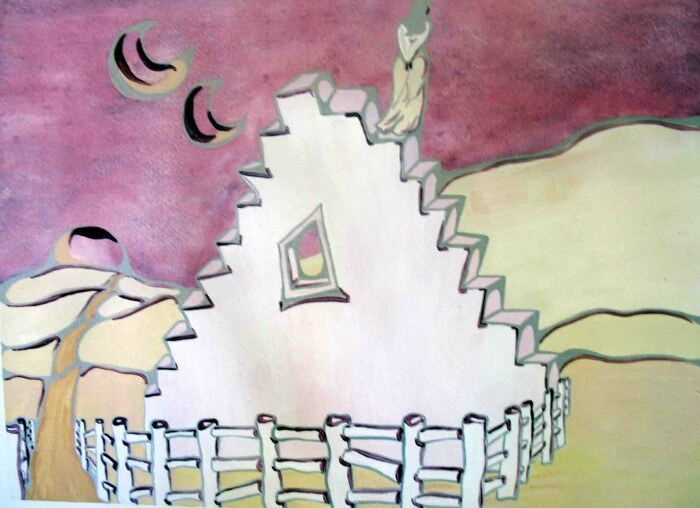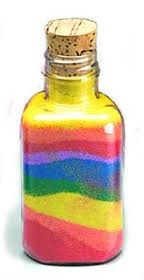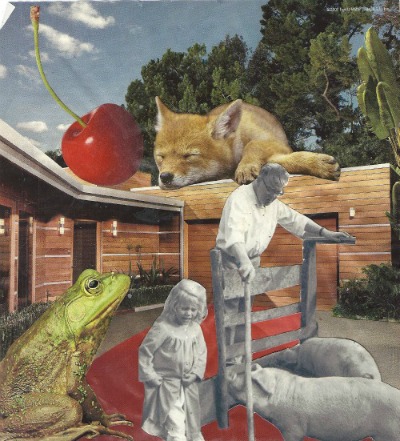Art therapy can have a potent healing effect. Pamela Hayes describes it as having “provided some of my clients with clarity and the strength to change their lives. In other instances, Art Therapy has moved people through the grief process. I have even seen art diagnosis my clients with medical problems.“
Pamela Hayes is a Licensed Marriage and Family Therapist (MFT) and a Board Certified Art Therapist with the American Art Therapy Association (AATA – www.arttherapy.org).
Some of you may know Pamela by her twitter handle @Hayesarttherapy and/or her website Hayes ART Therapy.

So without further ado, Pamela, could you describe a bit of your background?
In terms of my training, I attended a 2 year graduate program accredited by the American Art Therapy Association (AATA) and I graduated from Notre Dame de Numar, in Belmont, CA in 1992. Following graduation I completed my post-graduate work while supervised by an Art Therapist, and then I sat for the board exam.
 by Pamela and her 6 yr old daughter (2001)
by Pamela and her 6 yr old daughter (2001)
What aspects of art therapy do you find the most challenging?
- Therapy for Artists?
- Therapy at a museum?
- You must work only with children…
Thanks so much, Pamela, for taking the time to provide us with this fascinating glimpse of the art therapy world.






Thanks for sharing this! We have an art therapist at our agency, and it’s so great to see what she does. Prior to working with her, I would have thought of art therapy as being something really more for kids, but she ran a painting group for parents that was very successful. It was nice to have a group run that allowed the parents to focus on themselves for once.
I get teased at work because of my obsession with using play-doh in sessions with the kids, but it’s so effective, especially for kids with ADHD and other attention issues. It’s creative enough to keep their interests, while also being sensory and physical, and it’s an activity that can be broken down into steps–first we decide what we’re making, then we pick what colors we need, etc. The glass bottle activity reminded me of this.
How wonderful that you have an art therapist at your agency and that you are able to incorporate some art therapy in your own work with children!
What you are doing with the play-doh with the kids sounds great:)
While I haven’t taken any classes (yet) in art therapy, I remember employing art in a therapeutic manner for one of the sessions when I was working with my group of pregnant mothers.
I had brought in various magazines and pictures so that they could make an inspirational type of collage – one that illustrated the positive things that they envisioned doing for themselves while they were pregnant and/or things that made them feel good/happy.
Thanks so much for sharing some of your therapeutic work with art,
Dorlee
Thanks for sharing your work with us, especially such rich, wonderful images! I would love to track down the studies that you mentioned to share both with some of our students and to take on skeptics. Is there any chance you can share those citations with us?
If you could email me directly at Pamela@hayesarttherapy.com I will forward you the APA defense letter that includes all the cited studies. Thanks for asking,
Pamela
Hi Pamela,
Your beautiful work is inspiring me… I’m thinking now of perhaps trying to use a bit of art therapy in the process of my termination with a few of my clients at my placement as a way to help them express their feelings about my leaving and/or about how they feel they have changed/grown.
Specifically, I’m thinking of bringing in some scrapbooking type of materials (pictures as well as various words, symbols).
And perhaps I could make something for them as well…
What do you think of this idea? Do you have any suggestions/advice in this regard?
Thanks,
Dorlee
I think that is a great idea. My advice: Do not try to interpret someone else’s art. You must ask them the right questions in order for them to understand their own process and subconscious motivation.
You may want to check out some of my webinars or DVDs as instruction and guidance http://www.hayesarttherapy.com/index.html).
Keep up the good work.
Thank you very much for sharing your experience in this field! I am an MSW graduate student and have always had an interest in creative expression. I hope that the field of Art Therapy continues to strengthen and encourage counselors to incorporate art therapy into their work with clients. Thanks!!
I believe that this field continues to grow and be recognized by others as legitimate. It is very exciting.